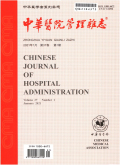基于典型案例探讨我国紧密型县域医疗卫生共同体现状及其展望
Discussion on the current situation and prospect of compact county medical community in China based on typical cases
摘要为进一步促进分级诊疗,提升基层医疗卫生服务能力,国家开始建设紧密型县域医疗卫生共同体(以下简称医共体)。当前,我国紧密型医共体发展尚存在4方面问题,即服务体系构建欠完善、基本体制机制不健全、供给能力质量未达标以及核心保障制度不完备。为解决现存问题,作者选择福建省三明市沙县区、河南省周口市郸城县和山西省太原市阳曲县作为典型案例,总结紧密型县域医共体先进试点地区经验,提出未来我国紧密型县域医共体建设应落足于构建"单核多层"体系,从协同管理、实务操作、制度建设、基础保障和多方监督5个层面出发,全面提升基层医疗卫生服务供给能力,最终实现分级诊疗与健康中国战略目标。
更多相关知识
abstractsIn order to further promote hierarchical medical system and enhance the capacity of primary healthcare services, China began to build compact county medical community. At present, the development of China′s compact county community still exists such problems as the construction of service system, the basic institutional mechanism, the quality of supply capacity and the core guarantee mechanism. In order to solve the existing problems, the authors took Shaxian District of Sanming City, Fujian Province, Dancheng County of Zhoukou City, Henan Province, and Yangqu County, Taiyuan City, Shanxi Province as examples to summarize the experience of the advanced pilot areas of the policy. In the future, the construction of compact county community in China should be based on the construction of " single-core multi-layer" system, starting from the five levels of collaborative management, practical operation, system construction, basic guarantee and multi-party supervision, to comprehensively enhance the healthcare services, and finally achieve the goal of the strategy of hierarchical medical and Healthy China.
More相关知识
- 浏览260
- 被引6
- 下载3


相似文献
- 中文期刊
- 外文期刊
- 学位论文
- 会议论文



 换一批
换一批 换一批
换一批



